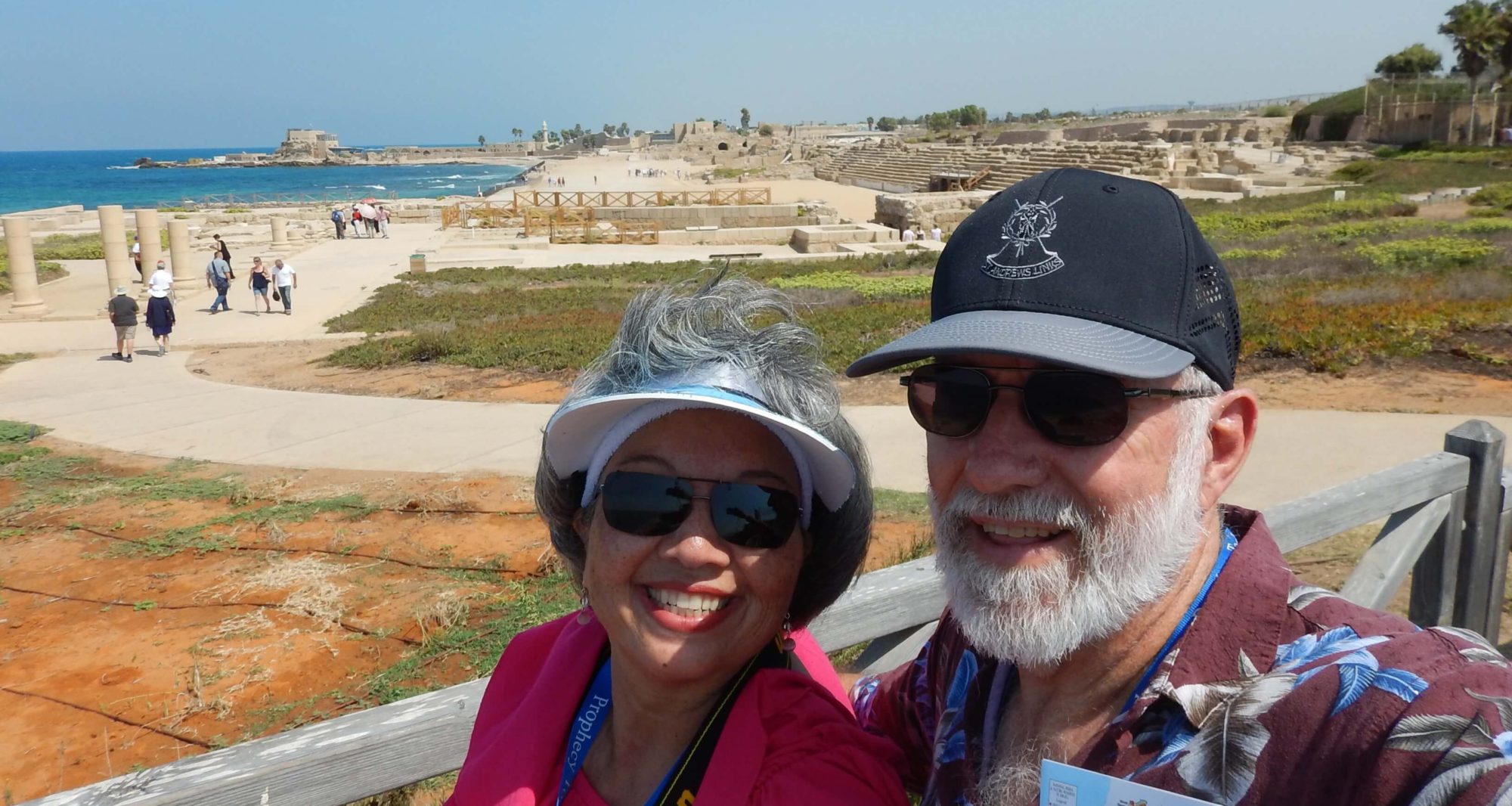“Kings of the earth, and all people; princes, and all judges of the earth: both young men, and maidens; old men, and children: let them praise the name of the LORD: for his name alone is excellent; his glory is above the earth and heaven.” Psalm 148:11-13
To reach Malaga from Cadiz, we had to sail through the Straits of Gibraltar, leaving the Atlantic Ocean and entering into the Mediterranean Sea. As we passed through the Straits, just after midnight, there was a lighted sign on a hillside that said “Gibraltar Cliffs.” The photo is not clear, but the large white blur on the right is the sign.

We arrived in the early morning at the Port of Malaga. The skies were clear and blue, and it promised to be a beautiful day for us. We had a 1.5 hour drive to our destination, the city of Granada, so we were among the first to disembark for our tour. We began with a beautiful drive along the shoreline in Malaga. As we left the city and entered the countryside, I couldn’t help but notice that the terrain was very similar to that of southern California. It was dry with small shrubs, a few oaks. As we got farther from Malaga, we entered the agricultural area with orchards of olive and citrus trees, the same kind of scenery I remember seeing on highway 126 through Santa Paula, California. The hills outside of Malaga are covered with olive trees because apparently they grow very well in hilly regions, and Spanish olive oil is highly valued.
 Malaga beach (top), countryside (bottom left), olive trees (bottom right)
Malaga beach (top), countryside (bottom left), olive trees (bottom right)
Granada
Historically, Granada was the last independent kingdom before Spain became a unified country under King Ferdinand and Queen Isabella. Symbolized by the pomegranate, it is bordered by the Sierra Nevada Mountains, making Granada is a popular tourist attraction that nomads once referred to as paradise. Nearly 280,000 people now call Granada home.
 The Sierra Nevada mountains can be seen beyond a grove of olive trees.
The Sierra Nevada mountains can be seen beyond a grove of olive trees.
*Royal Chapel
This is the burial place of King Ferdinand and Queen Isabella. They wanted Granada to be their final resting place because it was their dream that Spain be unified, and Granada was the last independent kingdom.
 From top-left, clockwise: Royal Chapel sign, Top of mausoleums, actual remains inside the tomb, Isabella’s crown and scepter
From top-left, clockwise: Royal Chapel sign, Top of mausoleums, actual remains inside the tomb, Isabella’s crown and scepter
*Cathedral of Granada
It took 200 hundred years to build this cathedral, and as such it has two basic architectural styles: gothic and baroque. Its construction was commissioned by Philip, the grandson of Ferdinand and Isabella, and its interior looks more like a palace than a traditional cathedral.
 Cathedral exterior
Cathedral exterior
 Clockwise from top-left: King Ferdinand (father of Spain) praying below Adam (father of mankind); stained glass; marble pillars; Queen Isabella (mother of Spain) praying below Eve (mother of mankind); altar area; alcove
Clockwise from top-left: King Ferdinand (father of Spain) praying below Adam (father of mankind); stained glass; marble pillars; Queen Isabella (mother of Spain) praying below Eve (mother of mankind); altar area; alcove
*Alhambra
This was a fort built by the Moors around the 9th and 10th centuries to protect their communities. It is on a hill that overlooks the city of Granada in the Muslim quarter of the city.

The steep, cobblestoned road we climbed to get a view of the fortress led us by a variety of shops and sights. Arabic influence was evident throughout this section of the city in the streets, shops, and architecture.
 Clockwise from top-left: steep, cobbled road up to viewpoint; restaurant; shot; detail of cobblestoned road; another shop
Clockwise from top-left: steep, cobbled road up to viewpoint; restaurant; shot; detail of cobblestoned road; another shop
Next stop: Barcelona, Spain
